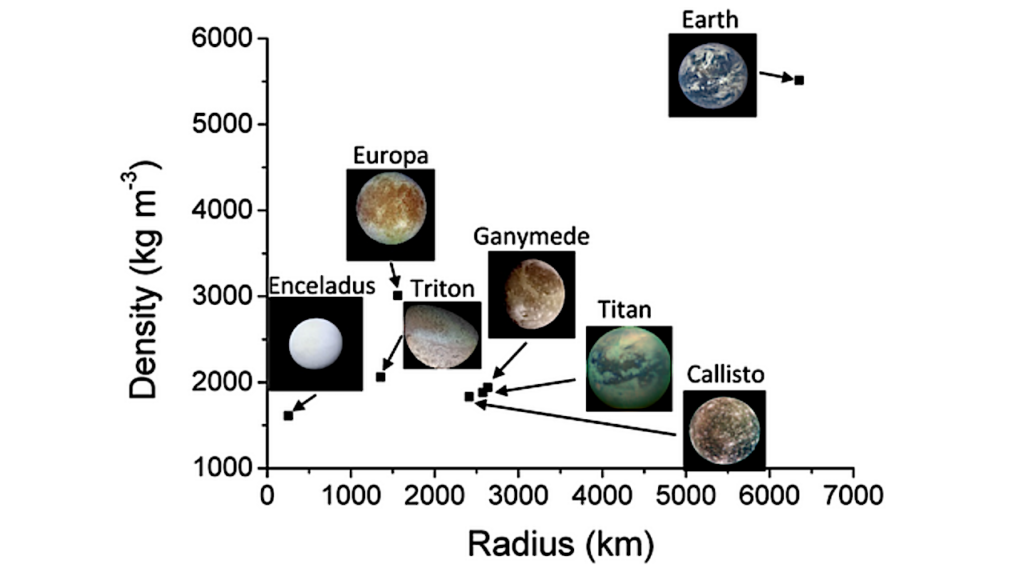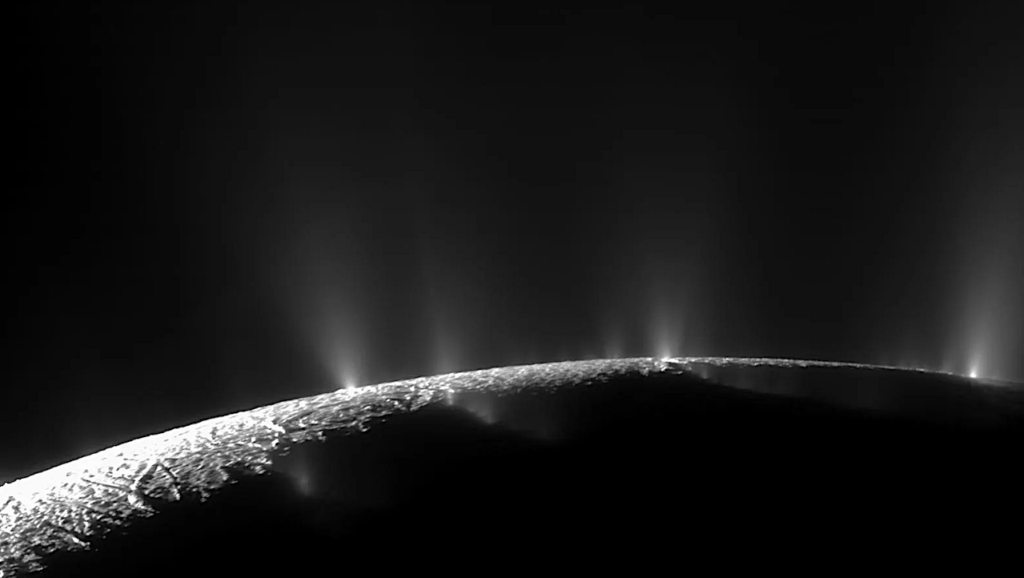Self-preserving Ice Layers On CO2 Clathrate Particles: Implications For Enceladus, Pluto And Similar Ocean Worlds

Under both engineering and natural conditions on Earth and in the Universe, some gas hydrates are found to be stabilised outside their window of thermodynamic stability by the formation of an ice layer-a phenomenon termed self-preservation.
Low occupancy surface regions on type I CO2 clathrate structures together with the self-preserving ice layer lead to an effective buoyancy for these structures which restricts the size range of particles that float in the ocean on Enceladus, Pluto and similar oceanic worlds. Our goal here is to investigate the implications of Lifshitz forces and low occupancy surface regions on clathrate structures for their self-preservation through ice layer formation, presenting a plausible model based on multilayer interactions through dispersion forces.
We predict that the growth of an ice layer between 0.01 and 0.2 μm thick on CO2 clathrate surfaces depends on the presence of surface regions in the gas hydrates with low occupancy. The effective particle density is estimated delimiting a range of particles that would be buoyant in different oceans. Over geological time, deposition of floating CO2 hydrates could result in the accumulation of kilometre-thick hydrate layers above liquid water reservoirs, and below the water ice crusts of their respective ocean worlds. On Enceladus, destabilisation of near-surface hydrate deposits could lead to increased gas pressures that both drive plumes and entrain stabilised hydrates to be redeposited on the surface of Enceladus or ejected into the E-ring of Saturn.
On ocean worlds such as Enceladus and particularly Pluto, the accumulation of thick CO2 hydrate deposits could insulate its ocean against freezing. In preventing the freezing of liquid water reservoirs in ocean worlds, the presence of CO2 hydrate layers could enhance the habitability of ocean worlds in our solar systems and on the exoplanets and exomoons beyond.
Mathias Boström, Victoria Esteso, Johannes Fiedler, Iver Brevik, Stefan Yoshi Buhmann, Clas Persson, Sol Carretero-Palacios, Drew F. Parsons, Robert W. Corkery
Subjects: Earth and Planetary Astrophysics (astro-ph.EP); Atmospheric and Oceanic Physics (physics.ao-ph)
Journal reference: A&A 650, A54 (2021)
DOI: 10.1051/0004-6361/202040181
Cite as: arXiv:2110.15769 [astro-ph.EP] (or arXiv:2110.15769v1 [astro-ph.EP] for this version)
Submission history
From: Johannes Fiedler
[v1] Fri, 29 Oct 2021 13:33:28 UTC (1,269 KB)
https://arxiv.org/abs/2110.15769
Astrobiology








